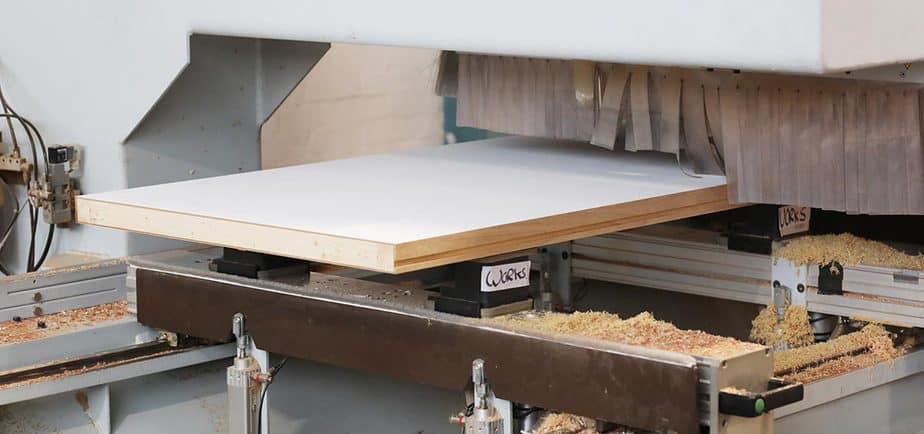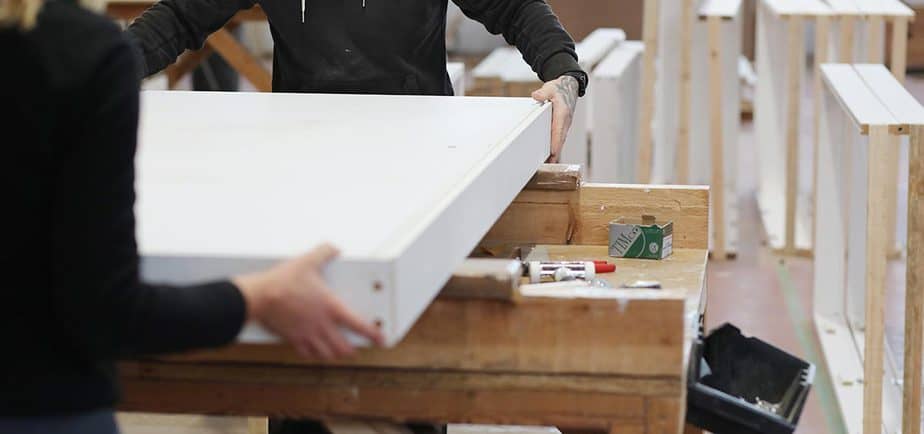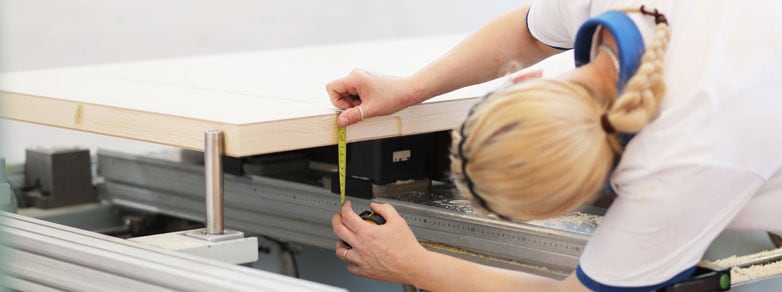There are, understandably, a number of regulations and standards that you must adhere to if you are responsible for – or in charge of – workplace fire safety.
Not following these standards puts you at risk of falling foul of the law – and, more importantly, you could be putting the lives of employees and building occupants at risk.
Properly certified standard and custom fire doors that meet certified standards like FD30 have a vital role to play in protecting life and property.
Custom and standard fire doors that meet the FD30 fire safety standard should be installed in all commercial and multi-occupancy buildings, and be capable of holding back a fire for at least 30 minutes.

What Are The Fire Safety Regulations And Who’s Responsible?
The Fire Safety Order says that you’re responsible for fire safety in a business or other non-domestic premises if you are:
- an employer
- the owner
- the landlord
- an occupier
- anyone else with control of the premises – a facilities manager or building manager, for example
Regulations also apply if you run a bed and breakfast, guesthouse or let a self-catering property – in other words, if you have paying guests.
What Are Non-Domestic Premises?
Non-domestic premises are:
- all workplaces and commercial premises
- all premises that the public has access to
- the common areas of multi-occupied residential buildings
- shared premises
In the case of shared premises, there is likely to be more than one responsible person. As such, the responsible persons will need to coordinate plans to ensure the safety of people on or around the premises.
For common or shared areas, the responsible person is the landlord, freeholder or managing agent.
How About New Buildings And Extensions?
All new buildings must comply with building regulations and fire safety standards. So, too, must alterations like loft conversions and extensions.
Fire safety considerations must be factored into all of these projects, and they must pass stringent independent building regs inspections.
Custom or standard FD30s fire doors installed in new buildings or altered properties could potentially have a big part to play in helping protect guests, tenants or occupiers from fire or potentially deadly smoke, and in helping them escape.
Smoke inhalation is actually the number one cause of fire-related deaths. It damages the body by simple asphyxiation (lack of oxygen), chemical or thermal irritation, chemical asphyxiation, or a combination of these.

What You Must Do If You Are The Responsible Person
You must:
- carry out a fire risk assessment of the premises and review it regularly
- tell staff or their representatives about identified risks
- implement and maintain appropriate fire safety measures
- plan for an emergency
- provide staff with information, fire safety instruction and training
What Role Do FD30s Play In Fire Safety?
Buildings are compartmentalised to delay the spread of fire from one area to another.
Usually, these compartments are linked by fire doors to allow the flow of traffic around the building.
Fire doors have two important functions in a fire. They:
1. form a barrier to stop the spread of fire when closed
2. provide a means of escape when opened
A well-manufactured and properly installed FD30s will delay the spread of fire and smoke without hindering the movement of people and goods around a building or workplace.
As such, all FD30s are subjected to tests to determine how capable it is of acting as a barrier to varying degrees of smoke and/or fire depending upon its location in a building and the fire hazards associated with that building.
What About FD60 Doors?
The most commonly specified integrity levels for FD-certified custom fire doors or standard fire doors are:
FD30 – 30 minutes
FD60 – 60 minutes
Fire doors with a rating in excess of FD60 are rarely used on escape routes or to protect people but may be found where the preservation of property is important – for example, sensitive documents stored in data storage areas.
How Are FD30s Tested And Certified?
To determine the FD rating of fire doors, manufacturers like Vigor Doors have their fire doors assessed by subjecting them to a test procedure as specified in BS 476-22:1987 or BS EN 1634-1:2014.
Tests are made on complete fire door sets. In other words, the fire door itself, the door frame and all hardware like locks, latches and hinges. Knowing if the fire doors in your building are up to scratch or not can be a difficult task without any inspection guidelines. But, don’t worry, we’ve got you covered with our Fire Door Checklist.
The fire door set is fixed in a wall representing its use in real life settings. The test procedure for FD30s will see one face of the door exposed to the heat conditions expected in a fire and observed for stability and integrity.
The FD30 standard demands that the tests be carried out with the upper part of the door under a small positive pressure, to simulate the conditions likely to occur in a fire.
As a fire door should be tested from each side to establish its performance with either face exposed to fire conditions, two fire doors are required for testing. It is reasonable to assume that all fire doors and door frames manufactured to the same specification as the two specimen doors achieve the same fire resisting properties.
While FD30 fire doors are tested together with a fire door frame and certified as a fire door set, it is common for fire door manufacturers like Vigor Doors to sell certified fire doors by themselves for use with frames to be constructed by the installer from timber.
Manufacturers can certify fire door sets, both for identification purposes and to guarantee their performance in a fire situation.
The first step for the manufacturer is to construct a fire door set designed to a specification that they are sure will resist a fire for at least 30 minutes. This door set will then be tested by an approved fire testing centre and, if it is passed, any door sets constructed to that specification can be considered for certification.
Once the certification is approved, each similarly constructed door set will be identified by a label identifying the manufacturer, the date of manufacture and the designated fire rating of the door type.

Is My Normal Door Likely To Meet FD30?
Normal panel doors are unlikely to be FD30, especially if they are less than 44mm thick.
Hollow flush doors will not be FD30. This can be detected by the weight of the door, because fire doors are much heavier than a hollow door and have fire-resistant cores.
Fire doors will have automatic closing devices (fire door closers) fitted.
FD30 fire doors are usually fitted with three fire door hinges due to fire doors being heavier than normal doors and to prevent warping.
Fire Door Seals Or Fire And Smoke Seals
FD30 fire doors and fire-resistant door sets are fitted with intumescent seals (discover more about these here).
These seals are fitted into grooves cut into the door or the frame, or alternatively, can be surface mounted.
Seal swell and plug the gaps between door and frame as soon as the temperature in the vicinity of the strips exceeds 200°C, which usually occurs about 10-15 minutes after the start of a typical workplace fire.
Smoke spreading is an even greater threat to life than flames, so fire doors might also have to be fitted with a ‘cold smoke’ seal to prevent smoke getting through the door edges.
Maintenance Of FD30s
Custom and standard FD30s are engineered to protect property and, much more importantly, life in the event of fire.
It’s therefore incredibly important that FD30 fire doors are properly installed and then maintained so that they perform to their best if a fire were to break out in your workplace or building you are responsible for.
Door sets fitted with hold-open devices or swing free type closers should be closed daily, particularly overnight when there is likely to be low building occupancy. For busy 24/7 buildings like hospitals or schools, fire doors should be closed at least weekly. All fire doors should close effectively from any angle of opening, using only the door closer.
Why might FD30 fire doors fail to close? The most common reasons are:
- Foreign bodies or other objects may be obstructing the door
- Incorrectly fitted or damaged seals
- Malfunctioning latches or latches requiring lubrication
Why It’s Vital That You Use The Right Fire Door Manufacturer And Installer
Here are just a few examples of how fire door manufacturing and installation can go wrong:

- Manufacturing defects and poor build quality can significantly reduce a fire door’s ability to resist heat
- Cheaper fire door sets can use materials that are less resistant to fire, or which fail to meet their listed FD Rating
- Improper installation can leave gaps large enough for fire and smoke to circumvent the door entirely
- Once fire doors have been installed, they still need to be inspected by a qualified professional. Vigor Doors employs its own safety inspector to ensure that Fire Doors are always in the right condition
Landlords, owners, facility managers and other people responsible for fire safety often approach Vigor Doors when other fire door manufacturers or installers have failed to meet their needs, whether that be for a single fire door installation or a larger project.
In many cases, it’s not just the previous fire door supplier’s manufacturing and packaging that have been the issue problem, but also their lack of communication: for example, the supplier will fail to provide assembly instructions or a clear plan showing the responsible person which FD30 fire door should go where.
Such mistakes can be fatal – and Vigor Doors have to step in to save the day, as you can see in this example.
Vigor Doors – Here For All Your Fire Regulation Needs
You can’t fall short of standards when it comes to preventing people from harm and potential tragedy.
Vigor Doors are here to ensure that landlords, owners, facility managers and other people responsible for fire safety in workplaces are able to rely on expertly manufactured and installed standard and custom FD30 fire doors.
We’re totally committed to delivering FD30 custom and standard fire door products and projects on time, to the highest standards – and on budget.
We’re incredibly passionate about keeping workplaces and the people you are responsible for as safe as possible in the unfortunate event of a fire.
Get FD30s fire door right the first time. Speak to a member of our Vigor Doors team on 01642 265 034, or alternatively drop us a line at info@vigordoors.com – we’re happy to help.


